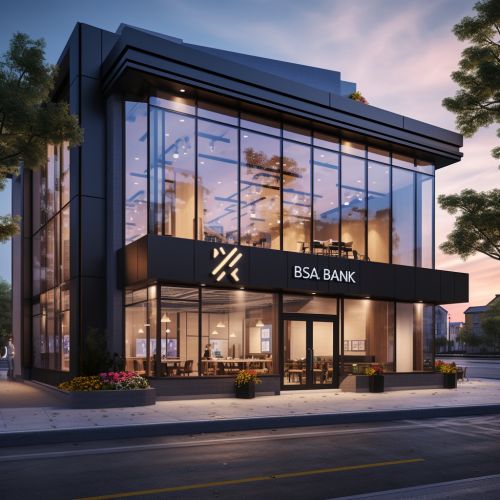Retail banks
Overview
Retail banking, also known as consumer banking, is the provision of services by a bank to the general public, rather than to companies, corporations or other banks, which are often described as wholesale banking. This differs from investment banking, which primarily focuses on raising capital by selling securities of companies to investors.


History
The concept of retail banking has been in existence for a long time, dating back to the ancient times when merchants would offer loans of grain to farmers and traders who carried goods between cities. This began around 2000 BC in Assyria, India and Sumeria. In ancient Greece and during the Roman Empire, lenders based in temples made loans, while accepting deposits and performing the change of money.
Services
Retail banks provide a wide range of services to their customers, which typically include:
- Savings accounts: These are accounts maintained by retail banks in which a customer receives a modest interest rate for depositing money, typically with the purpose of saving it.
- Checking accounts: These accounts offer easy access to your money for your daily transactional needs and helps keep your money secure.
- Debit cards: These are cards issued by banks to customers, which allow the customer to withdraw money from their account or pay for goods and services directly.
- Credit cards: These are cards issued by banks to customers, which allow the customer to borrow money to pay for goods and services.
- Personal loans: These are loans provided by banks to individuals for personal (not business or commercial) use.
- Mortgages: These are loans provided by banks to individuals to purchase property or real estate.
- Certificates of deposit: These are time deposits with a specific, fixed term, and usually a fixed interest rate.
Types of Retail Banks
Retail banks can be broadly classified into the following types:
- Commercial banks: These are traditional banks that provide a full range of financial services, from checking and savings accounts to mortgages and personal loans.
- Community banks: These are locally operated financial institutions that primarily serve the financial needs of the local community.
- Credit unions: These are member-owned financial cooperatives that provide a full range of financial services to their members.
- Savings and loan associations: These are financial institutions that specialize in savings deposits and mortgage loans.
- Online banks: These are banks that operate entirely over the internet, with no physical branches.
Regulation
Retail banks are heavily regulated to protect consumers. In the United States, for example, the Federal Reserve System and the Office of the Comptroller of the Currency oversee the banking industry. In the United Kingdom, the Financial Conduct Authority and the Prudential Regulation Authority perform similar roles.
Challenges and Opportunities
Retail banks face a number of challenges and opportunities in the current financial landscape. These include the rise of fintech, changing customer expectations, increased regulation, and the need for digital transformation.
